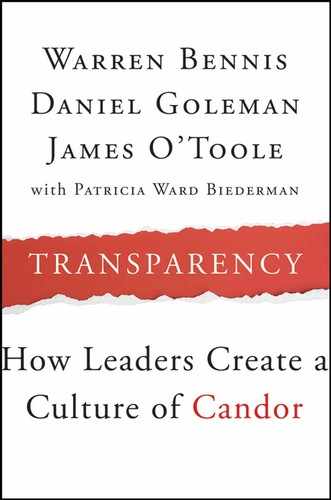Book Description
In Transparency, the authors-a powerhouse trio in the field of leadership-look at what conspires against "a culture of candor" in organizations to create disastrous results, and suggest ways that leaders can achieve healthy and honest openness. They explore the lightning-rod concept of "transparency"-which has fast become the buzzword not only in business and corporate settings but in government and the social sector as well.
Together Bennis, Goleman, and O'Toole explore why the containment of truth is the dearest held value of far too many organizations and suggest practical ways that organizations, their leaders, their members, and their boards can achieve openness. After years of dedicating themselves to research and theory, at first separately, and now jointly, these three leadership giants reveal the multifaceted importance of candor and show what promotes transparency and what hinders it. They describe how leaders often stymie the flow of information and the structural impediments that keep information from getting where it needs to go. This vital resource is written for any organization-business, government, and nonprofit-that must achieve a culture of candor, truth, and transparency.
Table of Contents
- Copyright
- PREFACE
- 1. CREATING A CULTURE OF CANDOR
- 2. SPEAKING TRUTH TO POWER
- 2.1. A PROBLEM OF LONG STANDING
- 2.2. ANCIENT VALUES APPLIED TODAY
- 2.3. FOOLS AND SENTRIES
- 2.4. PERILS OF THE IMPERIUM
- 2.5. THE LEGACY OF ENRON
- 2.6. FRAGILE TRUST
- 2.7. A HIGHLY VISIBLE LESSON
- 2.8. RESPONSIBILITIES OF MESSENGERS
- 2.9. MORALLY COURAGEOUS—OR JUST CRAZY WITH ANGER?
- 2.10. ORGANIZATIONAL EXAMPLES
- 2.11. A PERSONAL EXAMPLE
- 2.12. RESPONSIBILITIES OF LISTENERS
- 2.13. ORGANIZATIONAL RESPONSIBILITIES
- 3. THE NEW TRANSPARENCY
- NOTES
- THE AUTHORS
